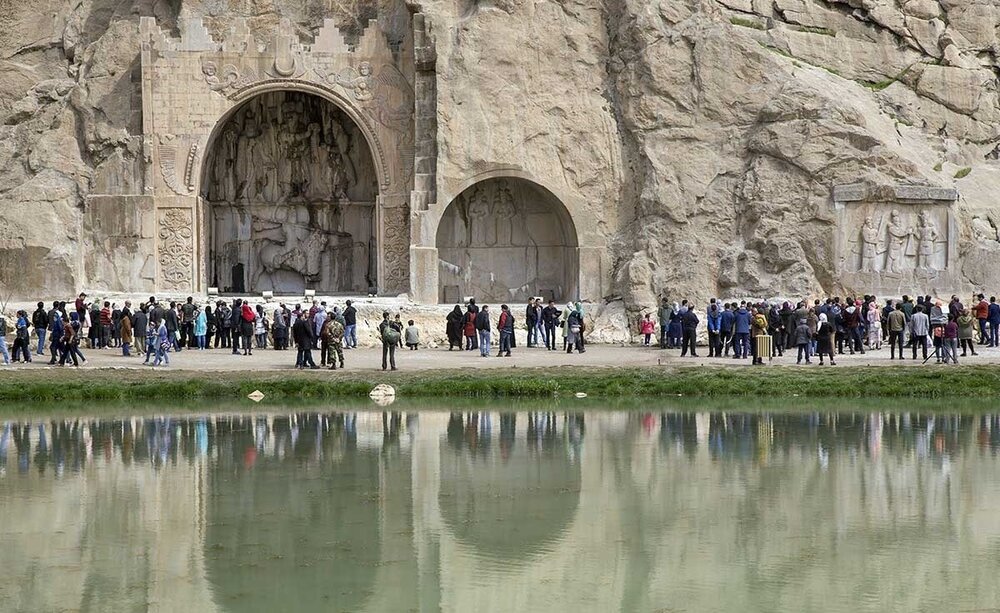Taq-e Bostan marks 91 years on national heritage list

TEHRAN – On Thursday, Taq-e Bostan, a magnificent Sassanid site in western Iran that embraces extraordinary bas-relief carvings, marked the 91st anniversary of its registration on the national list for cultural heritage.
Taq-e Bostan is home to incredible Persian heritage on the base of a towering cliff, featuring extraordinary reliefs of ancient victorious kings.
Last month, Kermanshah’s tourism chief said his directory was preparing to apply to UNESCO for listing a Sassanid archeological landscape on the World Heritage list.
With a high concentration on Taq-e Bostan, which embraces a magnificent series of large bas-relief carvings in Kermanshah, the archeological landscape is sought to be extended to Ctesiphon, an ancient city located 32 km southeast of modern Baghdad that served as the winter capital of the Parthian empire and later of the Sassanid empire, Mohammadreza Soheili said.
Originally, Taq-e Bostan was the site of a Parthian royal hunting garden, but the Sassanians later added their own regal touch. Its biggest alcove features elephant-mounted hunting scenes on the sidewalls and highlights the coronation of Khosrow II (r 590–628), beneath which the king rides off in full armor and chain mail (half a millennium before the European Black Prince made it fashionable.).
The second niche shows King Shapur III and his Roman-stomping grandfather Shapur II. To the right of the niches, is a fine tableau again showing Shapur II (r 379–383), in which he is depicted trampling over the Roman emperor Julian the Apostate (whom he defeated in 363) and receiving a crown of blessings from the Zoroastrian god Mithras.
The cliff is said to turn a brilliant orange in the setting sun, which then poetically dies on the other side of the duck pond, making late afternoon the best time to visit. The nearby outdoor eateries stay busy well into the night, and warm floodlights illuminate the carvings. The site is located 10 km north of Kermanshah's downtown.
The Sassanid era is of very high importance in the history of Iran. Under Sassanids, Persian architecture and arts experienced a general renaissance. Architecture often took grandiose proportions, such as palaces at Ctesiphon, Firuzabad, and Sarvestan, which are amongst the highlights of the ensemble.
Generally, a Sassanid archaeological landscape represents a highly efficient system of land use and strategic utilization of natural topography in the creation of the earliest cultural centers of the Sassanid civilization.
In 2018, an ensemble of Sassanian historical cities in southern Iran, titled “Sassanid Archaeological Landscape of Fars Region”, was named a UNESCO site. The ensemble comprises eight archaeological sites situated in three geographical parts of Firuzabad, Bishapur, and Sarvestan.
The World Heritage reflects the optimized utilization of natural topography and bears witness to the influence of Achaemenid and Parthian cultural traditions and of Roman art, which latter had a significant impact on the architecture and artistic styles of the Islamic era.
In addition to architecture, highly sophisticated crafts like metalwork and gem engraving also developed, but the state still supported scholarship. During those years, texts from the East and the West were translated into Pahlavi, the Sassanian language.
AFM
Leave a Comment